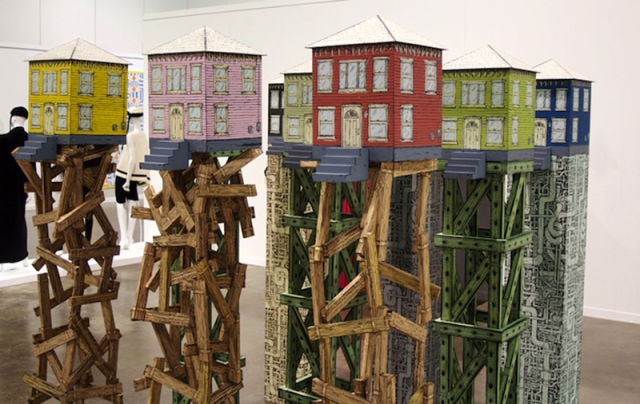

High Relief: High-relief sculptures also protrude outward from a flat surface, but to a much greater degree than low-relief works. Lorenzo Ghiberti’s Gates of Paradise is a good example of a low-relief sculpture. Low Relief: Low-relief sculptures are carved onto a 2D object with just enough depth to allow for the formation of shadows. Of course, there are variations in just how 3D a work is - and a variety of terms describes these degrees of dimensionality. For example, all truly three-dimensional works have volume - or the “quantity of three-dimensional space enclosed by a closed surface.” Additionally, 3D art has mass - this kind of intrinsic, tangible weight. When it comes to three-dimensional works, there’s a lot of terminology to pin down. Credit: Tollkühn/ullstein bild/Getty Images


Light art sculptures by Dan Flavin presented at Deutsche Guggenheim, Unter den Linden in December 1999. As Artdex puts it, “Three-dimensional art pieces, presented in the dimensions of height, width, and depth, occupy physical space and can be perceived from all sides and angles.” Some types of 3D art, such as sculpture, pottery, and jewelry, have been around since the beginning of time, while other iterations are relatively new.


 0 kommentar(er)
0 kommentar(er)
